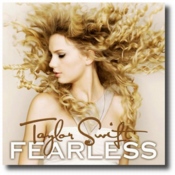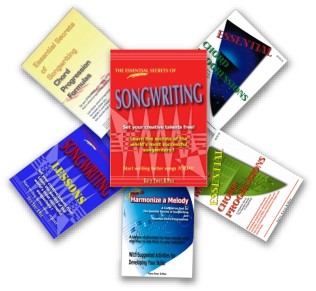Written by Gary Ewer, from “The Essential Secrets of Songwriting” website
Follow Gary on Twitter
 Probably the most clever aspect of Taylor Swift’s “You Belong With Me” is the melodic construction. Beautifully contoured, it’s what really makes the song work. It even displays writing technique usually reserved for more high-brow compositions, including melodic inversion. Here’s why the song is charting as a #1 on the Country charts, and is currently the #2 pop song on Billboard.
Probably the most clever aspect of Taylor Swift’s “You Belong With Me” is the melodic construction. Beautifully contoured, it’s what really makes the song work. It even displays writing technique usually reserved for more high-brow compositions, including melodic inversion. Here’s why the song is charting as a #1 on the Country charts, and is currently the #2 pop song on Billboard.
The song itself is a standard verse-chorus-bridge construction, with no surprises. Here’s a map of how the song unfolds:

As I mentioned, it’s the construction of the melody that makes this song winner. Largely pentatonic (F#major), the melody displays generally downward moving pentatonic melodic cells that work brilliantly with the melancholic lyrics (“I’m in the room/ It’s a typical Tuesday night/ I’m listening to the kind of music she dosen’t like/ And she’ll never know your story like I do”)
For the pre-chorus, the melodic cells become upward moving pentatonic cells, almost an exact melodic inversion of the verse patterns. This adds crucial cohesion to a melody without the listener even being aware of it, and it’s a technique you really should try for your own songs. The upward moving melody adds a plaintive “why-can’t-that-be-me” quality to the lyric, and sets the chorus up beautifully.
The chorus melody features the tonic (key) note more, and sits substantially higher, as chorus melodies should. The higher tessitura works because the lyric is far more emotion-laden. In fact, as you analyze the partnership of lyric and melody in this song, you’ll see that the melody always moves higher when the text moves from being narrative (verse) to being more explicitly emotional (chorus and bridge).
The energy of the song is also beautifully controlled. The choruses are more energetic than the verses, except for the reintroduction of the chorus immediately following the bridge. The bridge, as bridges do, offer more lyric information, and an intensity of emotion (“I remember you drivin’ to my house in the middle of the night/ I’m the one who makes you laugh/ When you know your about to cry/ And I know your favorite songs/ And you tell me about your dreams..”). But the energy is allowed to completely dissipate as it approaches the return of the chorus. This dissipation of energy is important because constant high-energy music can dull the musical senses to the message of the song.
So the message we should take as writers from “You Belong With Me” is that being a clever songwriter does not mean being overly complicated . It simply means making intelligent decisions about the construction of your song.
And how you know that the song is successful is if, as with this song, it all feels like it happened without a writer’s active intervention.
 “The Essential Secrets of Songwriting” shows you how to write great songs. It’s just one of a suite of 6 songwriting e-books written by Gary Ewer. (His newest e-book, “The Essential Secrets of Songwriting- Chord Progression Formulas” is being offered for free when you purchase any other of his songwriting e-books.) Let these six e-books show you every aspect of how to write great songs! Read more..
“The Essential Secrets of Songwriting” shows you how to write great songs. It’s just one of a suite of 6 songwriting e-books written by Gary Ewer. (His newest e-book, “The Essential Secrets of Songwriting- Chord Progression Formulas” is being offered for free when you purchase any other of his songwriting e-books.) Let these six e-books show you every aspect of how to write great songs! Read more..










Hi Gary how have you been ?
I learn many things these days thanks to you. Thank you very much 🙂
I purchased your 10-e book Bundle
And I read the above posting on p.231 of 4th edition.
While analyzing the melody of “you Belong with me” with your writing, I have a question.
You said The chorus melody features the tonic (key) note more however, Tonic note (Gb) appeared more in Pre-chorus.
Chorus sounds more powerful than pre-chorus even though there are fewer tonic notes.
This is what I’m curious about.
Of course, there are supplementary factors, such as Back instrumental, but the Chorus sounds more powerful when viewed only from the aspect of the melody, except for this benefit.
I think Chorus has a higher note and Tonic note is less compared to Pre – chorus, but it seems that the Tonic note appeared at a crucial moment in the chorus
I would like to hear your advice about this part.
I would appreciate it very much if you would reply me when you have time. 🙂
P.S It is okay to reply by email , Then have a good day today. 🙂
When I said that the chorus of “You Belong With Me” uses the tonic note more, I believe I may have been comparing it to the verse, not the pre-chorus. Remember, these issues are guidelines and principles, not rules. I know songs where the opposite is true: lots of tonic note in the verse, and hardly any in the chorus (I wonder if Stevie Wonder’s “Higher Ground” is an example of this). But most of the time, you’ll find that it’s the chorus that targets the tonic chord, letting us hear it more often.
And often, it’s not so much that there is more or less tonic note, but where the tonic note is happening. It may be part of the middle of a melodic phrase, and therefore not have much impact. But tonic notes that appear at the beginning and end of phrases usually have more harmonic impact.
Hope this helps,
-Gary
I think YBWM is in F#. It’s interesting though, tapping it out on my piano, it sounds like the melody uses the tonic (F#) more in the pre-chorus than the actual chorus.
It’s also worth noting that the pre-chorus does a nice job of bridging us over (frequency-wise) to the higher pitched melody of the chorus.
Hi, Gary
I just came across your site..I live in Florida but was raised in Nova scotia..I miss home a lot ..Anyway I am a songwriter and I have one song that I have 2 different A&R reps say can go the distance..I am in the process of making some changes, per their request..would love to get some input if possible
Hi Marla:
I’d be very happy to listen to the tunes and give you some input. Please drop me a line at gary[at]pantomimemusic.com, and either attach MP3s, or send me a link if you’ve got them online anywhere.
Looking forward to listening to them!
-Gary
Thank You very much for the structure of this song~ I was looking all over for it.
what kind of kick and drums did you use? they sound very good.
what books should I start out with I know u sell many .
Hi Miguel: I’m a trumpet player myself, so I can’t advise you on drums. Regarding the books, what aspect of songwriting are you wanting help with?
Great analysis!